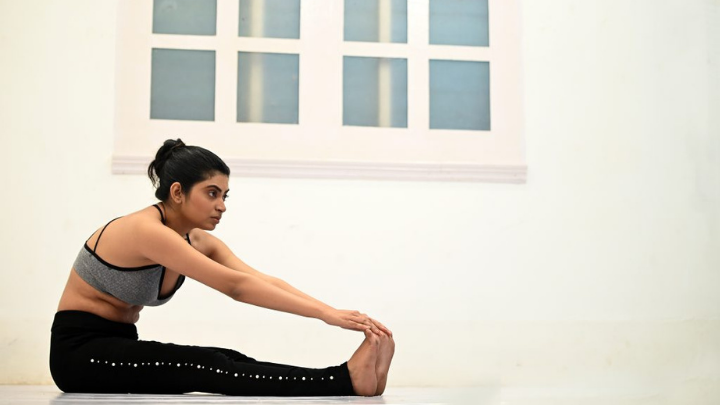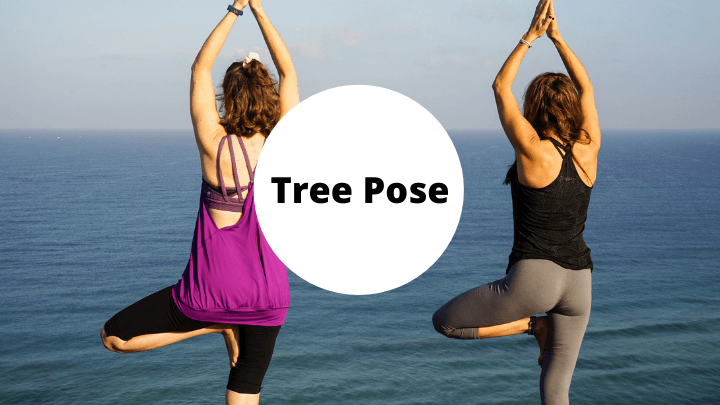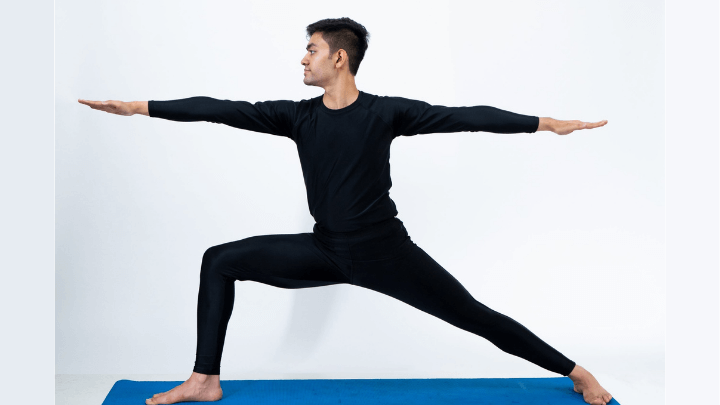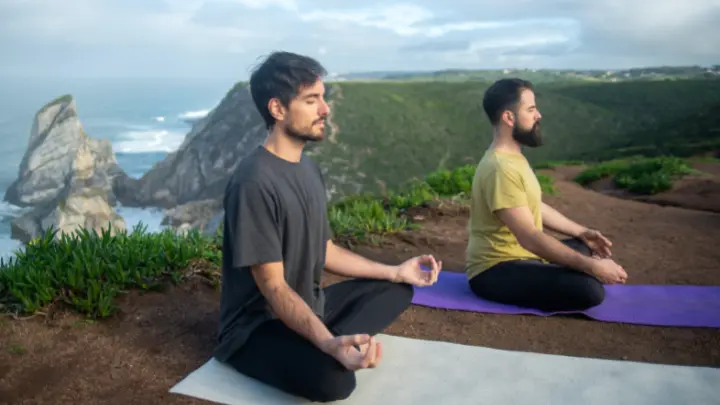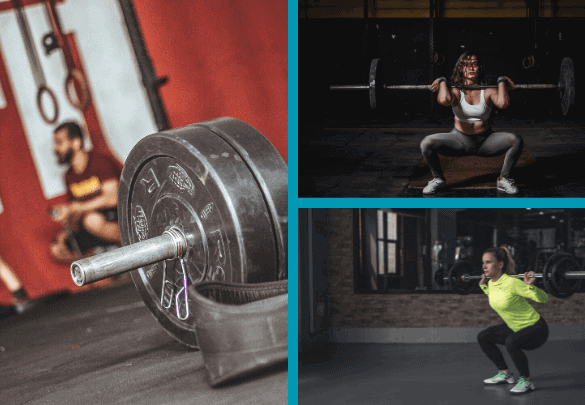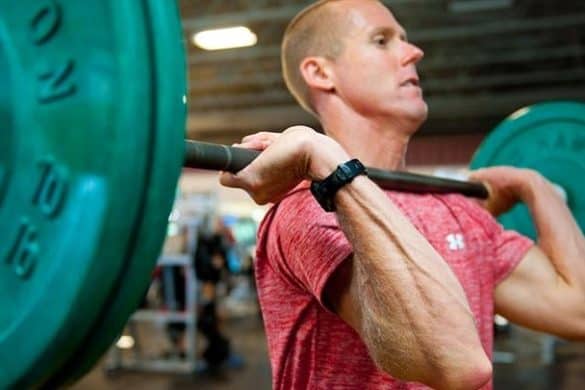This is the most complete guide to Seated Forward Bend (Paschimottanasana) online.
If you want to:
- See video/text-based examples of how to do Paschimottanasana
- Get access the most frequently asked Seated Forward Bend questions
- Find examples of how to move from Seated Forward Bend to other poses
Then you’ll benefit from the detailed insights in today’s guide.
Let’s get started!
What is Seated Forward Bend?
Also known as Paschimottanasana (derived from the Sanskrit words; Paschima – “west”, or “back of the body”, Uttana – “intense stretch” or “extended” and Asana – “seat” or “posture”); Seated Forward Bend is a classic seated pose that stretches your entire backside, including your calf muscles and the backs of your thighs (hamstrings).
Paschimottanasana is also known as “western side stretch”. In the yoga philosophy, your backside is considered your western side because yoga is usually practiced in the morning whilst facing the rising sun to the east; therefore the west corresponds to the backside of your body.
Seated Forward Bend is a basic sitting pose that prepares you for doing other postures in your yoga sequence, because it stretches your back muscles and gets your legs limber for more advanced postures.
By practicing Seated Forward Bend, you can improve your posture by aligning your spine properly and toning the muscles of your back and core body.
Want to know the best part? You don’t have to be flexible in your hamstrings to do a Seated Forward Bend and receive the benefits.
Throughout my 20+ years of teaching yoga and observing all different body types in this pose, flexibility (especially in the hamstrings) is something that comes with a dedicated practice.
Unlike other yoga postures, the great thing about Seated Forward Bend is you can always modify it to suit your particular body type, whether pregnant, tight in the hamstrings, or overweight. (Yes, pregnant women can do this pose with modifications.)
It all starts by lengthening your spine and leading with your heart into the forward bend: A straight, long spine is more important than anything else in doing this pose properly.
Let’s now take a look at how to master this simple yet effective pose, along with some variations.
How to Do Seated Forward Bend (Paschimottanasana)
Disclaimer: Whilst Paschimottanasana is suitable for most people, if you are suffering from a lower back injury, are pregnant, or are not used to physical activity; always consult your doctor before making a change in your lifestyle.
1. Sit up straight in an upright position.
2. Inhale your arms up overhead, lengthening your spine as much as possible.
3. Bend forward: Lead with your heart! Actively press your heart toward your toes, keeping the length in your spine.
Note: Avoid rounding in your lower back, as this causes your shoulders to round forward and chest to collapse. Also remember to bend from your waist — not your lower back — and keep your heart open.
4. Press your shoulders down away from your ears as you reach your hands down along your shin bones. Don’t force it! If you can, grasp your ankles with your hands or your big toes in your first two fingers and thumbs.
5. Whilst maintaining an open chest, actively press the top of your head toward your toes.
6. Breathe deeply and gaze fixedly at a point in front of you. If you feel discomfort, keep breathing deeply for at least five breaths. If you feel pain, ease out of the pose and take a rest before trying it again.
Seated Forward Bend Modifications for Different Body Types
If you feel strain in your knees: Place a pillow or folded blanket underneath them.
If you feel discomfort in your hips: Sit on a folded blanket.
If you feel overstretched in your hamstrings or calf muscles: Use a yoga strap (or, alternatively, a tie or belt) wrapped around your feet. Grasp the strap or belt and gently pull to deepen the stretch (but not too much!).
If you feel understretched in your hamstrings and wish to deepen the pose: Bring your feet together, place a yoga brick beneath them and grasp your hands alongside the brick as you deepen the stretch.
If you are pregnant: Place a pillow under your belly and stretch your chest over the pillow whilst separating your feet to avoid over-compression in your abdominal area.
How Long Should You Hold Seated Forward Bend For?
Hold Seated Forward Bend for 5 slow, deep breaths, then relax for 40-60 seconds.
How Often Can You Do Paschimottanasana?
If you are a beginner, you should avoid overstretching in Paschimottanasana (Seated Forward Bend), as it provides a deep stretch in your hamstrings and lower back. I recommend limiting your practice of this pose to two times maximum in one day.
If you have been practicing yoga for a while, then you have probably developed enough flexibility in your hamstrings, calves and back muscles to repeat Paschimottanasana several times in one day.
In fact, this pose can increase your height because it stretches your spine, so repeat the pose for greatest benefit — without overstretching!
Seated Forward Bend Variations
Flowing Seated Forward Bend
1. Come into Seated Forward Bend as described above.
2. Sit up straight and maintain an open chest by pressing your heart forward.
3. Use modifications (folded blanket under your hips, for example) to make your posture as comfortable as possible.
4. Inhale whilst raising your arms up overhead in a wide, sweeping arc. Take the length of your inhale to raise your arms up until your palms are touching and your gaze is up to your hands.
5. Exhale whilst releasing your arms back down to your sides in a wide, sweeping arc. Take the length of your exhale to release your arms back down beside your hips.
6. Repeat this action, inhaling your arms up and exhaling your arms down, for at least 5 full cycles of breath or until you start to feel uncomfortable in the pose.
How to Transition From Seated Forward Bend to Reverse Tabletop Pose
1. Come into Seated Forward Bend as described above.
2. Press your hands onto your mat on either side of your hips.
3. Lengthen your spine and extend your chest and head in a straight line with your legs whilst pressing your hands down onto the ground. Bend your knees if keeping your legs straight is difficult for you.
4. Press your shoulders down away from your ears.
5. Keep your gaze up to the ceiling, but if you don’t feel discomfort in your neck, you can tilt your head back all the way and create a stretch in your throat.
6. Experiment with both versions of Reverse Tabletop Pose: (1) modified with knees bent and (2) the complete pose with legs straight.
How to Transition From Seated Forward Bend to Reclined Supine Full Body Stretch
1. Return to Seated Forward Bend as described above. Hold for a few deep breaths to stretch the backside of your body.
2. Inhale your arms up overhead to lengthen your spine. Look up at your thumbs with palms together.
3. Exhale your arms down beside your hips and ease back onto your forearms as you lie back into a reclined position with legs straight.
4. Inhale your arms up overhead, hooking your thumbs to maximize the stretch in your arms and shoulders.
5. Point your toes and activate your leg muscles whilst keeping your arms stretched overhead.
6. Keep breathing deeply and actively stretching the entire front side of your body. If you feel slight discomfort or pain in your abdominal area, you should ease out of the pose and rest before trying it again.
What are the Benefits of Seated Forward Bend (Paschimottanasana)?
Seated Forward Bend is the best sitting pose to help stretch your hamstrings.
Anatomically, your hamstrings are connected to your lower back muscles. If your hamstrings are tight, it is likely that your lower back is also tight. Over time, tight hamstrings can lead to chronic lower back pain and discomfort.
Paschimottanasana is a great way to keep your lower back healthy by opening up your hamstrings, especially if you are an avid runner or jogger.
Mentally, Seated Forward Bend has a calming effect by lowering your blood pressure. It can also reduce stress and anxiety.
Since this pose creates a deep stretch in your lower and mid-back, Seated Forward Bend stimulates your liver and kidneys.
It also naturally stimulates your intestines by placing gentle pressure on your abdominal area, thus improving digestion.
It helps:
- stretch your hamstrings, lower back, and calf muscles
- provide relief from headache
- lower blood pressure and reduce stress
- alleviate fatigue
- improve digestion
- calm your mind and counteract insomnia[1]
Even if your flexibility is limited, Seated Forward Bend can be modified to suit your particular body type.
The pose will allow you to stretch the most important joints in your body whilst toning your back and core muscles.
Who Should Not Do Seated Forward Bend?
Seated Forward Bend is contraindicated if you have sciatica (inflammation in your sciatic nerve) or a disc-related condition in your vertebral column.
You can still do the pose but with greater caution and modifications as necessary.
If you have a slipped disc, avoid Seated Forward Bend altogether, as it places pressure on your lower back [2].
Women who are pregnant or menstruating can do Seated Forward Bend with modification: Separate your feet, place a pillow under your belly, and don’t go down all the way. Keep your belly soft.
As with all yoga postures, listen to your body when you practice and if anything feels uncomfortable, then stop immediately or ask your instructor to help you modify the pose.
What Muscles Does Seated Forward Bend Work?
Seated Forward Bend stretches your hamstrings, lower back, neck, calf muscles, and glutes (buttock muscles).
Your hamstring muscles attach to the outside of your knees and extend up to the “sit bones” of your pelvis. Seated Forward Bend stretches and lengthens your hamstring muscles.
Whilst you actively maintain an open chest by pressing your heart forward in this seated position, you work your core body muscles. You must activate and tone your core muscles in order to prevent your back and shoulders from rounding.
Since this is an upright, seated position, you tone and strengthen your back muscles as you maintain a straight spine and open chest in Seated Forward Bend.
You also contract your abdominal muscles and hip flexors as you actively bring your upper body forward and down towards your toes.
You stretch your calf muscles and Achilles tendons by keeping your toes flexed up and back toward your chest instead of pointed.
Related post:
Is Paschimottanasana Difficult?
Seated Forward Bend is not a difficult pose if you do it correctly with proper alignment. However, you can make this pose difficult if you force yourself to grab your toes before your body is ready for it.
Hamstring and lower back flexibility takes time to develop. Avoid rounding forward or hunching over in an attempt to reach your feet, as this could overstretch your muscles and cause you to lose proper alignment in your spine.
How Can You Improve Seated Forward Bend?
To improve your alignment in Paschimottanasana, try this:
First, reach down to your glutes (your buttocks) and pull out the fleshy part out to the sides. This action will ground and press your seated bones more firmly into your mat.
Then, bring a micro-bend into your knees.
Lengthen your spine by reaching your arms straight up.
Hinge from your hips (rather than your lower back) and lead from your heart as you lengthen your spine over your thighs without rounding your back or hunching forward at your shoulders.
It’s better to fold forward only halfway with a straight spine—even if you can’t reach your toes—instead of reaching all the way to your toes with a rounded spine.
Remember, the goal of yoga is not to do the poses perfectly, but to perfect your own personal practice by taking good care of yourself and your body.
How Can You Deepen Seated Forward Bend?
If you are a seasoned yoga practitioner and wish to challenge yourself in Paschimottanasana, here’s how to get a deeper stretch.
The best part: If you make all these suggested adjustments, you will get a deeper stretch in not only your hamstrings, but also in your lower back, hips and calf muscles.
Sit on top of a folded blanket. The extra height of your hips will help you hinge forward from your hip joints (instead of your lower back) and maintain a straight, long spine.
Press the backs of your knees down toward the floor. This will lengthen your hamstrings and help you get a deeper stretch.
Keep your front thigh muscles active by “lifting your kneecaps”, thereby engaging your quadriceps (thigh) muscles, the “opposing muscles” to your hamstring muscles.
This action of engaging the opposing muscles, scientifically proven to be effective, will help you activate a deeper stretch in the opposing muscles—your hamstrings—where you want most to stretch.
Flex your feet. As I say to students in my yoga classes, “Press your toes toward your nose.” This action will stretch your calf muscles deeper.
Loop a yoga belt or yoga strap around the balls of your feet. Grab the strap with both hands and use your arm strength to gently yet firmly pull your upper body forward to lengthen your spine.
Remember that Seated Forward Fold is a process of developing flexibility, and there is no rush for you to be able to grab onto your toes. Be patient with yourself and give yourself the practice time necessary for your muscles to become increasingly flexible.
Are Forward Bends Bad for Your Back?
As long as you use proper alignment when doing Paschimottanasana, then it can be a safe posture for your back.
However, forcing yourself to touch your toes by hunching and rounding your spine forward can strain your back muscles and create disk compression in your spine.
Conclusion
Seated Forward Bend, along with all yoga practice, is a great pose to stretch the backside of your body, including your hamstrings, calf muscles and lower back.
Paschimottanasana can help calm you down and reduce stress and anxiety, in addition to many physical benefits.
This is a great stretch to prepare for more advanced yoga postures in your practice sequence, plus … You can always modify this pose so it is comfortable for you while still receiving all the great benefits.
Want to know the best part? Paschimottanasana helps you “live life from your heart” as you bend forward and lead the action of the posture from your heart with a broad, open chest. This sounds like a great way to approach life in general!
Now I’d like to turn it over to you:
- What do you like the most about Seated Forward Bend?
- When are you going to try it?
- Perhaps you’d like to share your experience with Paschimottanasana?
What Next?
Why not check out some more Yoga poses that can help improve your flexibility and strength for specific sports like Badminton – Yoga For Badminton Players
Let me know by leaving a comment below and remember to follow us on Instagram for more great content.

